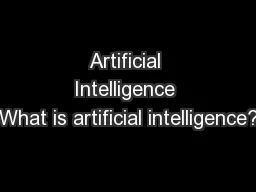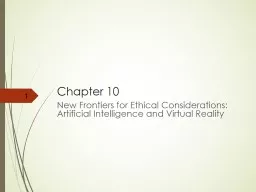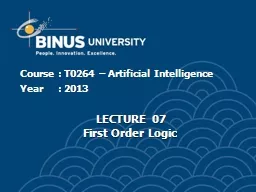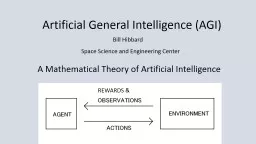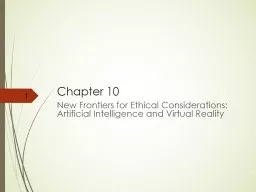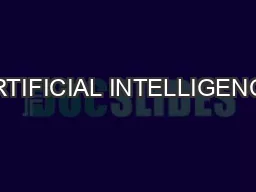PPT-CSE 571: Artificial Intelligence
Author : calandra-battersby | Published Date : 2015-12-04
Instructor Subbarao Kambhampati raoasuedu Homepage httprakaposhieasasueducse571 Office Hours Right after the class 315415pm BY560 History At ASU CSE 471598 has
Presentation Embed Code
Download Presentation
Download Presentation The PPT/PDF document "CSE 571: Artificial Intelligence" is the property of its rightful owner. Permission is granted to download and print the materials on this website for personal, non-commercial use only, and to display it on your personal computer provided you do not modify the materials and that you retain all copyright notices contained in the materials. By downloading content from our website, you accept the terms of this agreement.
CSE 571: Artificial Intelligence: Transcript
Download Rules Of Document
"CSE 571: Artificial Intelligence"The content belongs to its owner. You may download and print it for personal use, without modification, and keep all copyright notices. By downloading, you agree to these terms.
Related Documents


